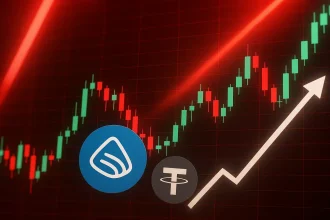In March 2025, the United States government took a groundbreaking step by establishing the Strategic Bitcoin Reserve (SBR), marking a significant shift in the nation’s approach to digital assets. This initiative, spearheaded by President Donald Trump, aims to position Bitcoin as a national reserve asset, reflecting the administration’s commitment to integrating cryptocurrencies into the broader financial framework.
Genesis of the Strategic Bitcoin Reserve
The concept of a strategic reserve is not new; nations have long maintained stockpiles of essential resources like oil and gold to safeguard against economic uncertainties. The SBR, however, introduces a novel asset into this paradigm: Bitcoin. By capitalizing on Bitcoin already owned by the federal government—estimated at approximately 198,000 BTC as of August 2025—the SBR seeks to leverage the unique properties of cryptocurrencies, such as decentralization and limited supply, to enhance national financial resilience.
Objectives and Structure of the SBR
The establishment of the SBR is outlined in an executive order signed on March 6, 2025. The order delineates several key components:
- Strategic Bitcoin Reserve: A permanent reserve asset funded by Bitcoin forfeited to the Treasury. Federal agencies are encouraged to transfer their Bitcoin holdings to this reserve, with a commitment not to sell these assets and to explore taxpayer-neutral strategies for acquiring additional Bitcoin.
- U.S. Digital Asset Stockpile: A repository for non-Bitcoin digital assets forfeited to the Treasury. Unlike the SBR, this stockpile will not actively acquire additional assets beyond those forfeited, and the Treasury may determine stewardship strategies, including potential sales.
- Comprehensive Accounting: A mandate for all federal agencies to fully account for their digital asset holdings to the Treasury and the President’s Working Group on Digital Asset Markets within 30 days of the order.
Implications for the Cryptocurrency Market
The creation of the SBR has profound implications for the cryptocurrency market. By officially recognizing Bitcoin as a strategic asset, the U.S. government lends unprecedented legitimacy to the digital currency, potentially influencing its valuation and adoption. This move may also encourage other nations to consider similar reserves, fostering a more widespread acceptance of cryptocurrencies in global finance.
However, the initiative has sparked a spectrum of reactions. Proponents argue that the SBR could serve as a hedge against inflation and economic volatility, given Bitcoin’s deflationary nature. Critics, on the other hand, express concerns about the volatility of cryptocurrencies and the potential risks associated with integrating them into national reserves.
Comparative Analysis with Traditional Reserves
Traditional strategic reserves, such as the U.S. Strategic Petroleum Reserve and the United States Bullion Depository for gold, are tangible assets with established market behaviors. Bitcoin, as a digital asset, introduces a different set of dynamics, including high volatility and regulatory uncertainties. The SBR’s success will depend on effective management strategies that account for these unique characteristics, balancing potential rewards with inherent risks.
Future Prospects and Challenges
Looking ahead, the SBR’s development will likely influence regulatory frameworks, technological advancements, and market dynamics within the cryptocurrency space. The initiative may prompt the creation of new policies to address the integration of digital assets into national reserves, necessitate advancements in secure storage and management technologies, and impact market behaviors as investors respond to government participation in the crypto market.
Challenges abound, including ensuring the security of the reserve against cyber threats, developing clear regulatory guidelines, and managing the volatility associated with Bitcoin. The government’s approach to these challenges will be pivotal in determining the SBR’s effectiveness and its role in the broader financial system.
Conclusion
The establishment of the Strategic Bitcoin Reserve represents a bold and unprecedented move by the U.S. government into the realm of digital assets. While it offers potential benefits in terms of diversification and modernization of national reserves, it also presents significant challenges that require careful consideration and strategic planning. As the SBR evolves, it will undoubtedly serve as a case study for other nations contemplating similar initiatives, shaping the future interplay between traditional finance and the burgeoning world of cryptocurrencies.






